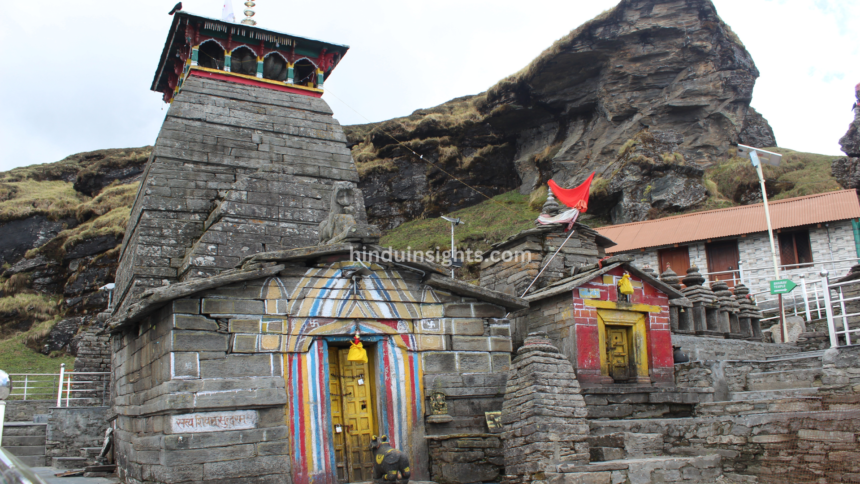Nestled in the heart of the majestic Himalayas, Tungnath holds the esteemed title of the highest Shiva temple in the world, standing tall at an elevation of 3,680 meters. Located in Uttarakhand, this sacred site is not only a significant pilgrimage destination but also a burgeoning hub for adventure enthusiasts and spiritual seekers. This blog explores Tungnath’s rich heritage, its current status, and the future potential it holds for those looking to experience both adventure and spirituality.
The Historical Significance of Tungnath
Tungnath is part of the Chopta region and is revered as one of the Panch Kedar temples, dedicated to Lord Shiva. According to legend, it is believed that the Pandavas constructed this temple to seek forgiveness from Lord Shiva for their sins committed during the Kurukshetra war. The temple’s architecture is a testament to ancient craftsmanship, featuring intricately carved stones and wooden idols.
Adventure Awaits: Trekking to Tungnath
The journey to Tungnath is an adventure in itself, making it a prime destination for trekkers and adventure enthusiasts. The 5-kilometer trek from Chopta is both thrilling and rewarding, offering breathtaking views of snow-capped peaks, lush meadows, and diverse flora and fauna.
Key Highlights:
- Scenic Trails: The trail offers stunning vistas of the Chaukhamba, Nanda Devi, and Trishul peaks, attracting nature lovers and photographers.
- Trekking Season: The best time to trek to Tungnath is from April to November, avoiding the heavy snowfall months.
- Adventure Activities: In addition to trekking, the region is also ideal for camping, bird watching, and photography, enhancing its appeal to adventure seekers.
Spiritual Awakening at Tungnath
For spiritual seekers, Tungnath is more than just a temple; it is a place for reflection, meditation, and connection with the divine. The serene environment, coupled with the majestic backdrop of the Himalayas, creates a peaceful atmosphere conducive to spiritual growth.
Key Highlights:
- Rituals and Festivals: The temple hosts various festivals like Maha Shivaratri, attracting thousands of devotees who participate in rituals and prayers.
- Meditation Spots: The tranquil surroundings provide perfect spots for meditation and self-reflection, allowing visitors to connect with their inner selves.
- Cultural Experience: The local culture, enriched with stories and legends, adds to the spiritual essence of the pilgrimage.
The Ecological Significance of Tungnath
The Tungnath region is part of the Nanda Devi Biosphere Reserve, which is recognized for its rich biodiversity and ecological significance.
Key Highlights:
- Biodiversity: The area is home to numerous species of flora and fauna, some of which are endemic to the region, making it an important ecological zone.
- Conservation Efforts: With increasing tourism, there is a growing emphasis on sustainable tourism practices to preserve the natural environment.
- Ecotourism: Initiatives aimed at promoting ecotourism can help protect the region’s biodiversity while providing a unique experience for visitors.
Future Potential: A Dual Destination
As a unique combination of adventure and spirituality, Tungnath is poised to become a premier destination for both thrill-seekers and spiritual pilgrims.
Key Opportunities:
- Adventure Tourism Growth: With the increasing popularity of trekking and adventure sports, the region can capitalize on this trend by enhancing infrastructure and services.
- Spiritual Retreats: Establishing spiritual retreats and workshops can attract those seeking solace and self-discovery, combining adventure with spiritual growth.
- Cultural Festivals: Promoting local festivals and cultural events can enhance the tourism experience, drawing in more visitors and fostering community involvement.
Tungnath is a remarkable destination that offers the perfect blend of adventure and spirituality. With its rich history, stunning natural beauty, and serene atmosphere, it has the potential to attract a diverse range of visitors. As both adventure seekers and spiritual pilgrims flock to this sacred site, Tungnath stands poised to shine as a beacon of spiritual growth and adventure tourism in the Himalayas.
Have you visited Tungnath or are you planning to? Share your experiences in the comments below!
If you found this blog helpful, consider sharing it with fellow adventurers and spiritual seekers. Visit for more travel insights and updates on sacred destinations at Hinduinsights.com
What makes Tungnath Temple special?
Tungnath Temple is renowned as the highest Shiva temple in the world, offering breathtaking views of the Himalayas and a serene atmosphere for spiritual seekers.
How do I reach Tungnath Temple?
The temple is accessible via a scenic trek from Chopta, with the nearest road connectivity available in the town. The nearest airport is in Dehradun.
What is the best time to visit Tungnath Temple?
The ideal time to visit is from April to November when the weather is pleasant, and the temple is open for pilgrims.
Is the trek to Tungnath Temple difficult?
The trek to Tungnath is moderately challenging, making it suitable for most trekkers. Proper preparation and fitness will enhance the experience.


